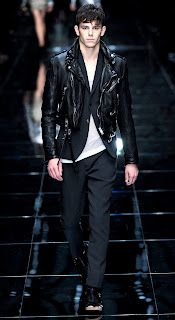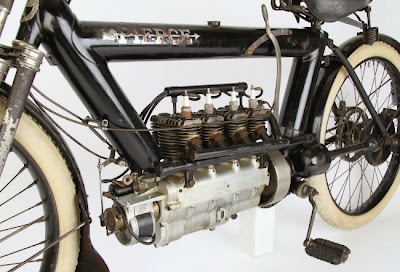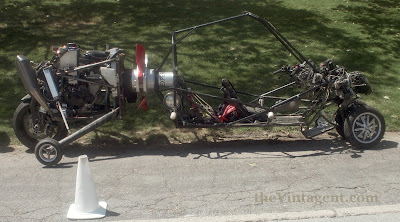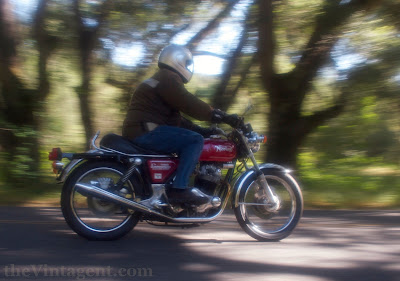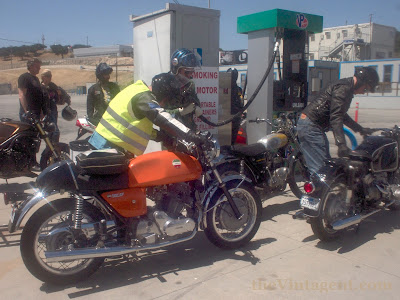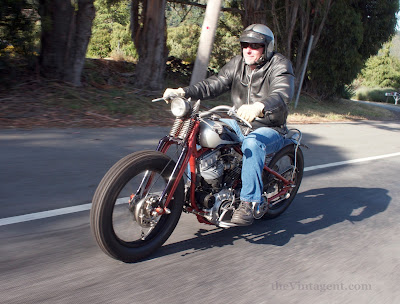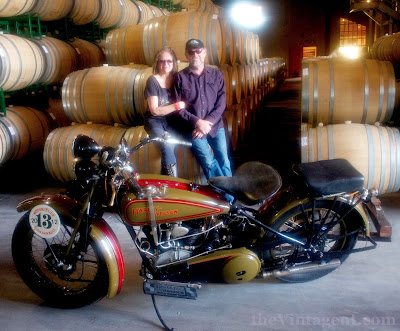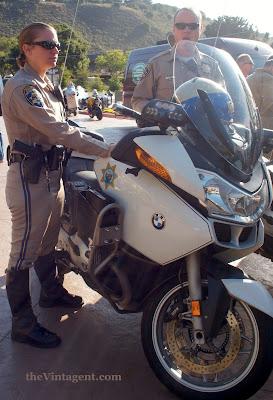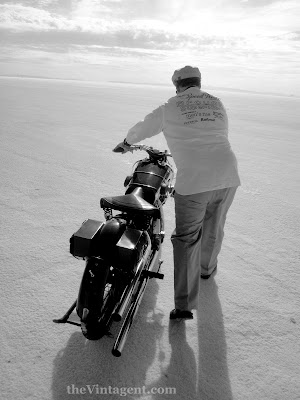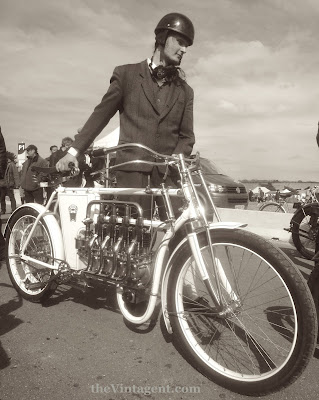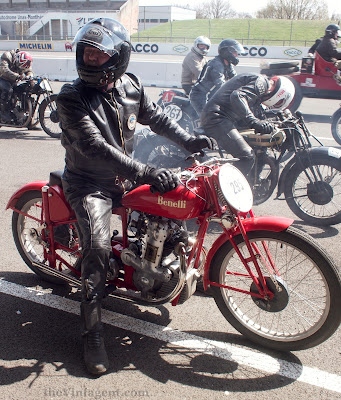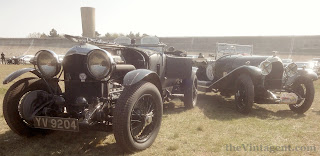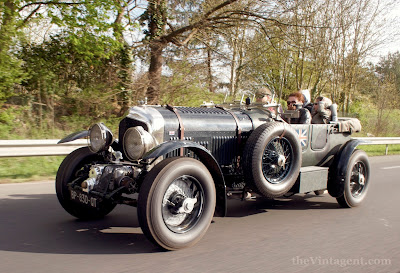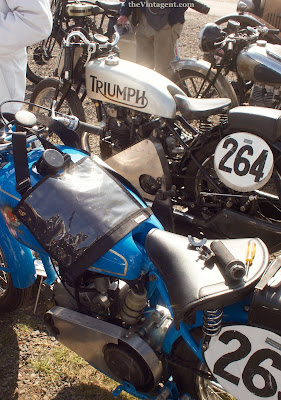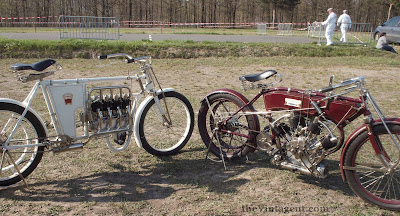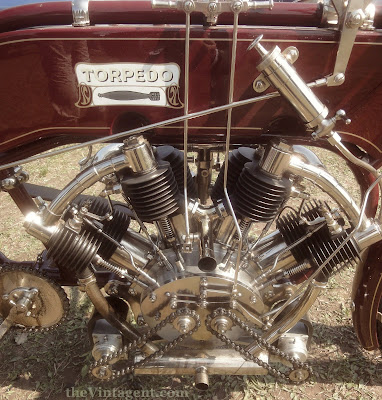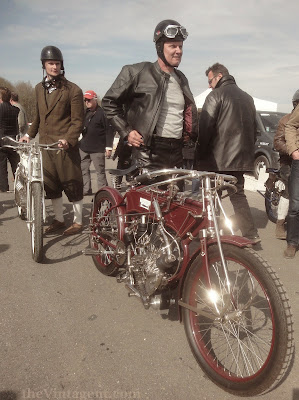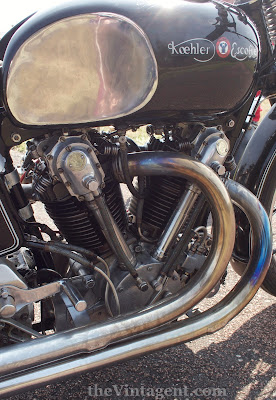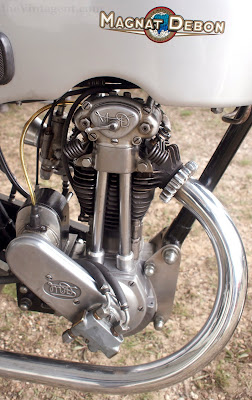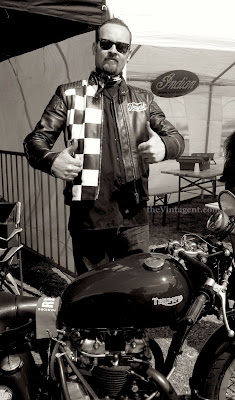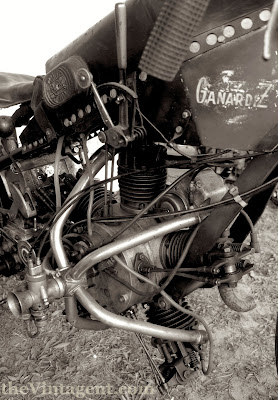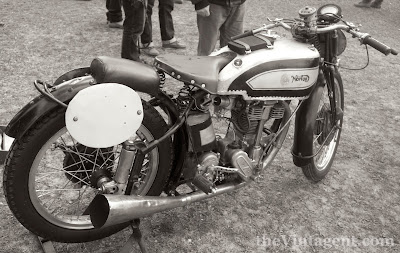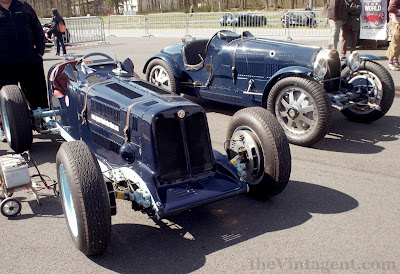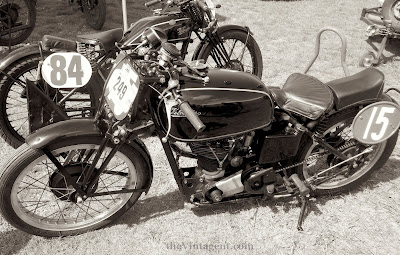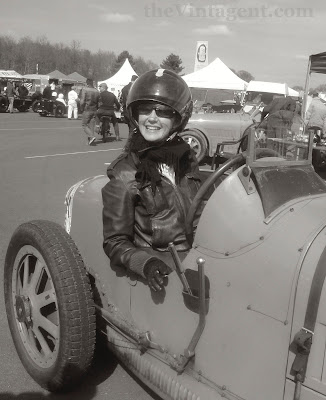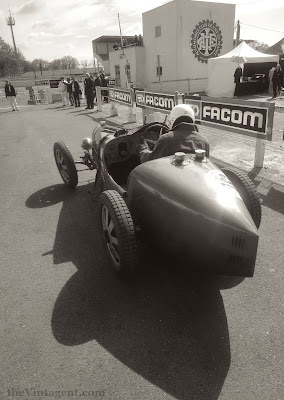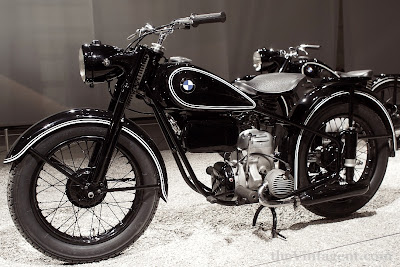 |
| Coming to the Bonhams Stafford auction April 28th; the Montlhéry Vincent Black Shadow |
The Montlhéry race circuit, just 15.5 miles south of Paris, holds a place much like Brooklands in England in the hearts of European speed-fans, but the track isn't a fractured memory from pre WW2, its a living thing in continuous usage since constructed in 1924. Today the track is regularly pounded by automotive companies, being engineered to withstand 5,000lb racing cars traveling at 150mph - a far-sighted vision for 1920s engineers. But then, French engineers of the early 20th Century were exactly that, out on the exploratory limbs of technology, making double overhead camshaft four-valve multi-cylinder motorcycles even in the 'Teens. What Montlhéry became best known for, though, was long-distance record-breaking; while nearby Arpajon was an excellent spot for Land Speed Record attempts in the 1920s and 30s, Montlhéry was a perfect venue to circulate for hours around its steeply banked oval, being relatively smooth (well, smoother than Brooklands...) and amenable to 24-hour full-bore, unsilenced riding.
 |
| The most visible modification from 'standard' spec is the large capacity racing fuel tank. The Shadow is a matching #s machine with History... |
On May 13 1952, a pair of mildly modified 1,000cc Vincent Black Shadows arrived in Paris to attempt a new 24-hour speed record, with a slew of Vincent factory employees (including 18 year old apprentice John Surtees), a few pressmen, plus a French team contingent of riders, the record-attempt team manager, and timing officials from the FIM. One of the machines was a 'test hack' which circulated for hours during testing, on which modifications were made for an average/acceptable riding position for the 11 riders participating; Phil Heath, John Surtees, Robin Sherry (AMC factory racer), Cyril Julian (TT rider), Vic Willoughby (infamous writer for The Motor Cycle), Dennis Lashmar, and Danny Thomas, plus four French riders; Ken Bills was team manager. All the riders save Danny Thomas were able to keep up the 100mph pace, so he was relieved of duty.
"The record breaking machine is a standard Black Shadow with 8:1 compression as supplied to the American market. ... We used 1-5/32" T.T. Annals in conjunction with two inch open pipes, the fuel being non-leaded 80 octane... Lightning cams... We removed our front brakes and rear flap, fixed rearward foot rests were fitted... special five Gallon petrol tank and a Feridax perspex flyscreen. Modified handlebars gave a very flat riding position and riders lay on a Sorbo 'mattress' fastened to the tank top...Avon...Standard 300 x 20 front racing and 3.50 x 19 rear racing tyres..." His complete (and delightful) account of the attempt can be found here on the VOC site.
Ted Davis, the Vincent competition manager, originally built the Montlhéry racers with a caged big-end bearing, an improvement over the standard crowded-roller item, but Philip Vincent insisted the standard item was good enough, and ordered them changed back to standard, 'to demonstrate the reliability of the standard Black Shadow', which of course it did, but not with the intended outcome! It didn't help that France was having its hottest May on record - so hot that the Avon rear tires on the pair of Black Lightnings (brought over for high-speed records) shed their treads at high speed, and the Castrol XL oil was described by Davis (read here) as 'dirty hot black water' when drained from the engines.
Ted Davis, the Vincent competition manager, originally built the Montlhéry racers with a caged big-end bearing, an improvement over the standard crowded-roller item, but Philip Vincent insisted the standard item was good enough, and ordered them changed back to standard, 'to demonstrate the reliability of the standard Black Shadow', which of course it did, but not with the intended outcome! It didn't help that France was having its hottest May on record - so hot that the Avon rear tires on the pair of Black Lightnings (brought over for high-speed records) shed their treads at high speed, and the Castrol XL oil was described by Davis (read here) as 'dirty hot black water' when drained from the engines.
After ten hours forty minutes, the standard big-end of the Vincent crankshaft failed, and a deafening silence rang in the speed bowl; the team ran to the far side of the track (a mile!), and waited 20 minutes to push the bike over the 'line' to take the 11hour record. While a Vincent never took the 24hr/100mph record (it took a Velocette for that one), the Vincent team still took and impressive eight World Records, including the six-hour record at 100.53mph and 1,000km at 100.67mph, and 10 hours at 99.17mph. Other records were 7 hrs @ 99.73mph, 8 hrs @ 99.73mph, 9 hrs @ 99.40mph, 10 hrs @ 99.17mph, 11 hours @ 91.98mph, and 1,000 miles @ 99.20mph.
I mentioned above that TWO Black Shadows were taken to Montlhéry...one a 'test mule' and the other used in the attempt; both were tuned and prepared for the attempt, and both machines survive. One is coming up for sale at the Bonhams Stafford sale on April 28th. Apparently there is no record of 'which bike was which', but both can rightly claim to be part of the attempt at Montlhéry...


























